Incremental SDLC
Process
series of progressive and interdependent steps by which an end is attained.
- Defined Process
- Empirical Process A process model is a model (i.e. a simplified description) of the steps you need to take to achieve your goal.
Defined Process Control
- A process with a well-defined set of steps. Given the same inputs, a defined process should produce the same output every time.
- Great when in an environment with relatively low volatility that can be easily predicted; given the same inputs, a defined process should produce the same output every time based on its repeatability and predictability nature.
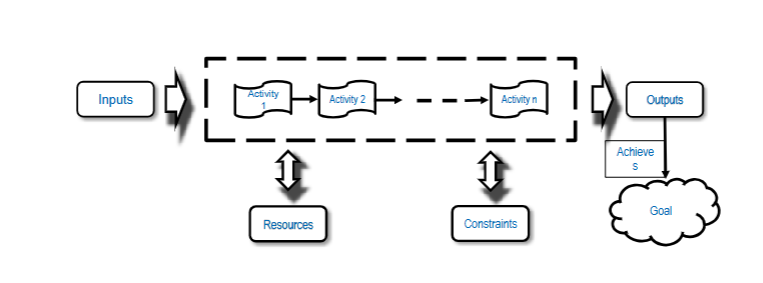
Empirical Process Control
- In empirical process control, you expect the unexpected. Empirical process control has the following characteristics:
- Learn as we progress
- Expect and embrace change
- Inspect and adapt using short development cycles
- Estimates are indicative only and may not be accurate
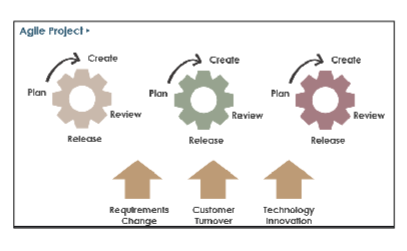
Software Development Life Cycles (SDLCs)
Activities in SDLC:
- Requirements gathering
- Systems / Architectural Design
- Implementation / Coding / Integration
- Testing
- Evolution:
- Delivery and Release - Deployment
- Maintenance
Waterfall
- a plan driven approach
- Requirement: Find out what stakeholders want the product to do
- Analysis: Figure out exactly what this means (create Software Requirements Specification)
- Design: Determine how to build the product (create design documentation)
- Implementation: Code & integrate (create working product)
- Maintenance: Repair or enhance
- Retirement: Remove from service
- Development is broken into phases that
- not overlap
- document of output
- Does not work well when
- Errors are possible in requirement elicitation, analysis and design
- Requirements are hard to figure out or subject to change
Incremental SDLC Model
Combines iterative
Each Mini Waterfall produces deliverable increments of software
Iteratively construct partial implementations of a system
Each sub-release incrementally add functions
Pros
- Develop major requirements first
- Risk of software development spread across multiple increments
- Lessons learnt from each increment can complement future increments
- Each release of the mini waterfall phase delivers an operational increment
- Initial product delivery is faster
- Reduces the risk of failure
Cons
- Requires good planning and design
- Designing the increments may not be straightforward
- Requires early definition of requirements to identify the increments
- Model is rigid and does not allow for iterations within each increment or “mini waterfall”
Some formal SDLCs
- Prototyping
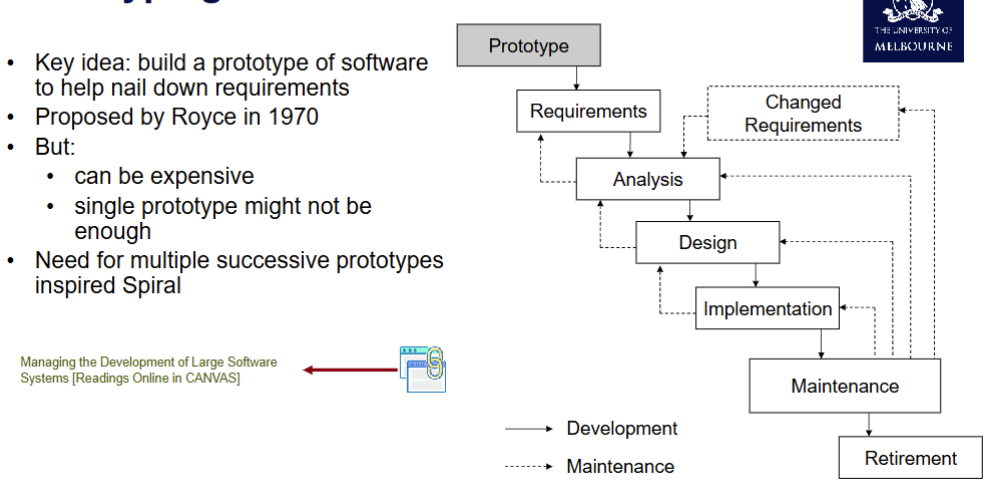
- Rapid Prototyping
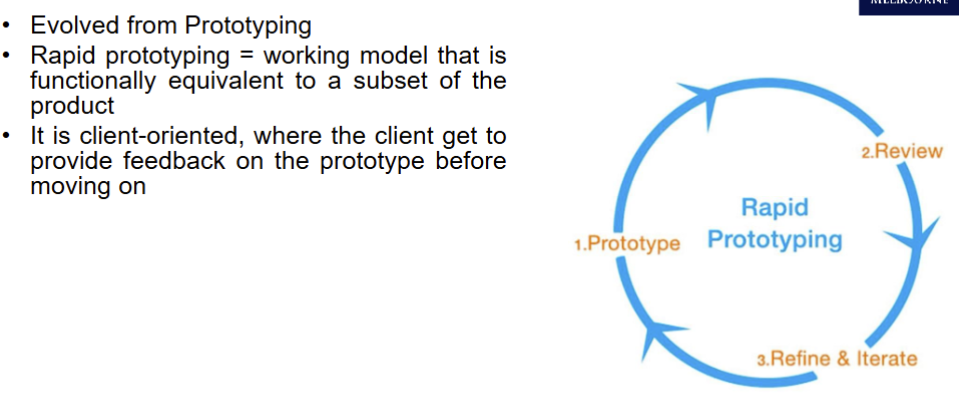
- Spiral Model
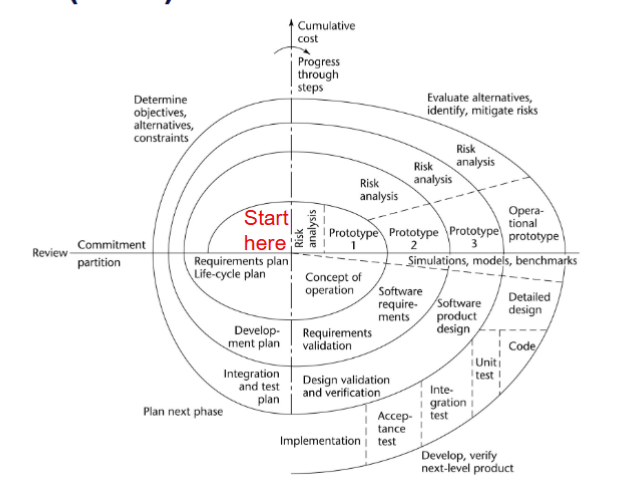
- Incremental
- Iterative
Agile Principles
Our highest priority is to satisfy the customer through early and continuous delivery of valuable software.
Welcome changing requirements, even late in development. Agile processes harness change for the customer's competitive advantage.
Deliver working software frequently, from a couple of weeks to a couple of months, shorter timeframes is the preference.
Business people and developers must work together daily throughout the project.
Build projects around motivated individuals. Give them the environment and support they need and trust them.
The most efficient and effective method of conveying information to and within a development team is face-to-face conversation.
Working software is the primary measure of progress.
Agile processes promote sustainable development. The sponsors, developers, and users should be able to maintain a constant pace indefinitely.
Continuous attention to technical excellence and good design enhances agility.
Simplicity – the art of maximizing the amount of work not done – is essential.
The best architectures, requirements, and designs emerge from self-organising teams.
At regular intervals, the team reflects on how to become more effective, then tunes and adjusts its behaviour accordingly.
Agile Framework
Kanban
- Billboard
- Visualising work
- limiting work in progress
- maximising efficiency
Scrum
- helps teams work together to develop, deliver and sustain complex products.
- Everything is divided into timeframes
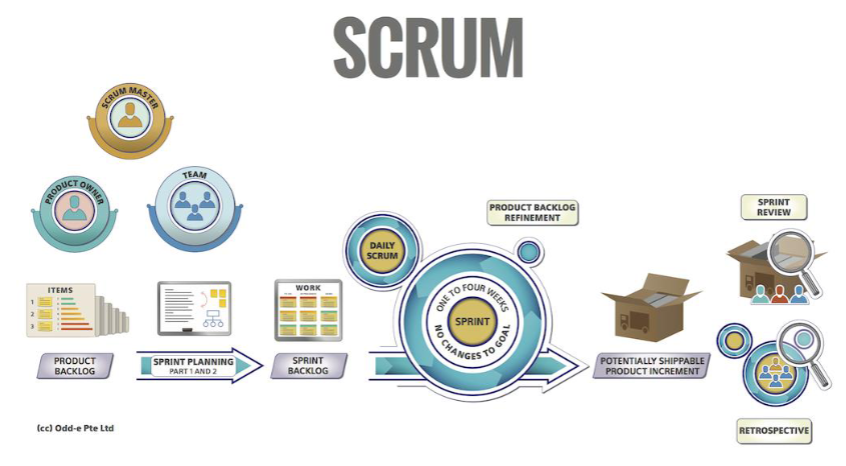
eXtreme Programming (XP)
- frequent releases in short development cycles
- intended to improve productivity and
- introduce checkpoints at which new customer requirements can be adopted.
- Pair Programming
Scrum
Foundations
- Scrum is founded on empiricism and lean thinking.
- Empiricism asserts that knowledge comes from experience and making decisions based on what is observed.
- Lean thinking reduces waste and focuses on the essentials.
- Iterative, incremental approach to optimise predictability and to control risk.
- Scrum engages groups of people who collectively have all the skills and expertise to do the work and share or acquire such skills as needed.
Scrum Pillars
- Transparency
- Emergent and visible to those who work
- Transparency enables inspection.
- Inspection without transparency is misleading and wasteful.
- Scrum Artefacts help with transparency
- Inspection
- Goals must be inspected frequently and diligently to detect potentially undesirable problems.
- Scrum Events help with inspections
- Adaptation
- Process should be adjusted if deviated
- Minimise the deviation
- Self management
Scrum Documentations
- Product Backlog
- Definition of Done
- Sprint Backlog
- User Stories
- Acceptance Criteria
- Burndown Charts
- Release Plans
- Retrospective Documents
- Technical Handover Document
- User Manuals
Model Selection
- Formal Models
- Customer knows what they want at the start
- Stable, precise and known requirements
- Change is not expected
- Mature technologies and tools
- Agile Models
- Customer gives time to project
- Requirements continue to emerge
- Change is welcome
- Hybrid
- Client has a prescriptive model established
Difference and Misconception Between Agile and Waterfall
- Slipping from Agile back into Waterfall
- Team falls to linear planning and rigid phase boundaries
- Doing a lot of short waterfall and thinking is Agile
- Agile is Iterative and not in many small phases
- Waterfall masquerading as Agile Software Development
- label as Agile but not showing critical iteration stuff
Agile Suitability
- Unified Stakeholder Role – Customer, user, and other stakeholders act as a single entity.
- Small, Co-located Teams – Agile works best with small teams in one location.
- Highly Available Users – Users must provide constant, prompt feedback.
- Low Emphasis on Non-Functional Aspects – Security, alternate options, and risks
- Simple & Gradual Requirements Evolution – No major conflicts or complex prioritization needed. Functional increments can be provided quickly. No conflict management
- Minimal Documentation – Maintenance rely on team knowledge rather than heavy formal documentation.
- Early Release Over Rigorous Verification – Requirements verification over coding less important than early release.
- Limited Code Refactoring Needs – Changes should not require major redesigns. People generally in charge of maintenance are product developers
- Agility is not all-or-nothing – Projects can adopt Agile to varying degrees based on which assumptions hold